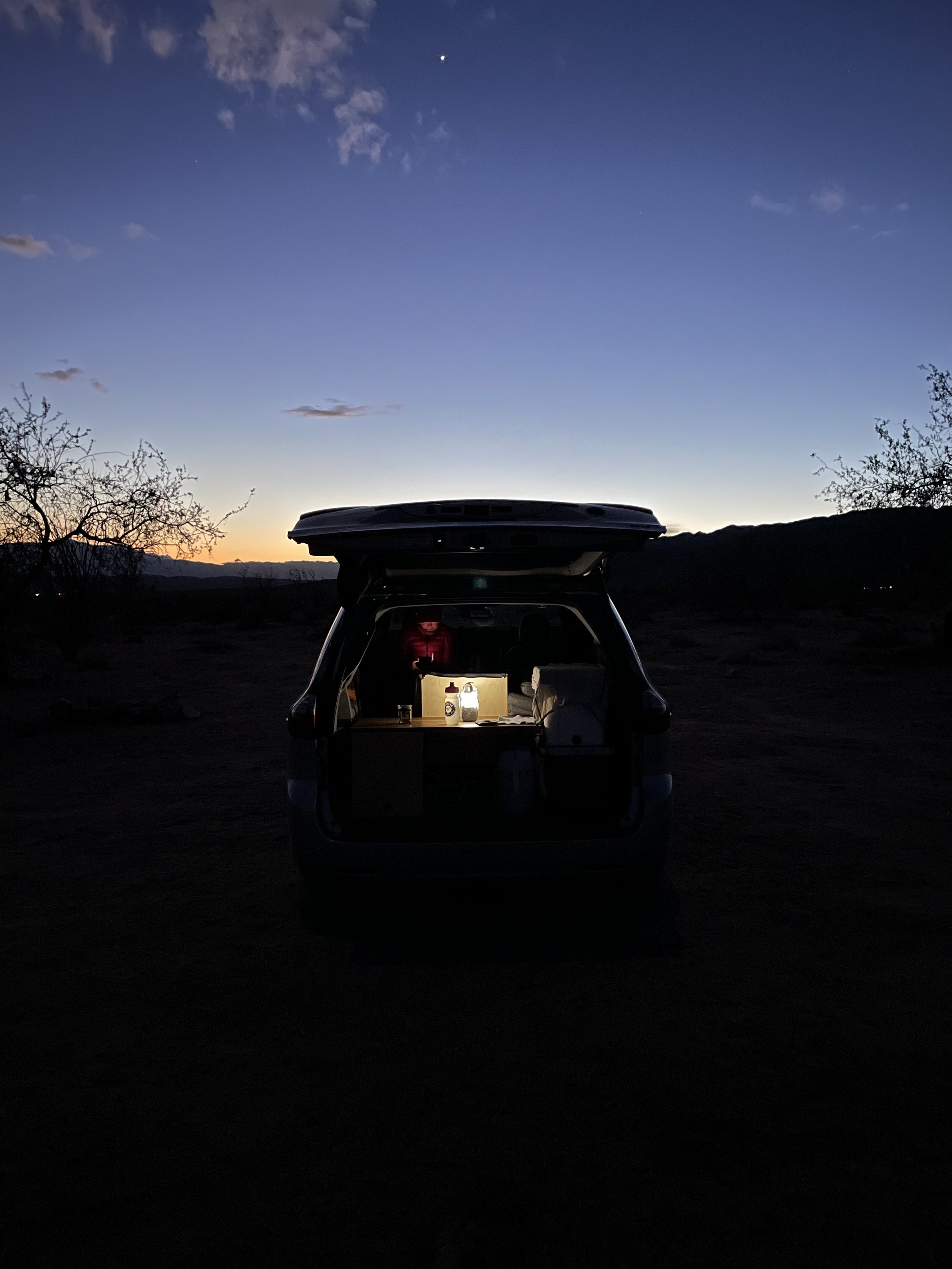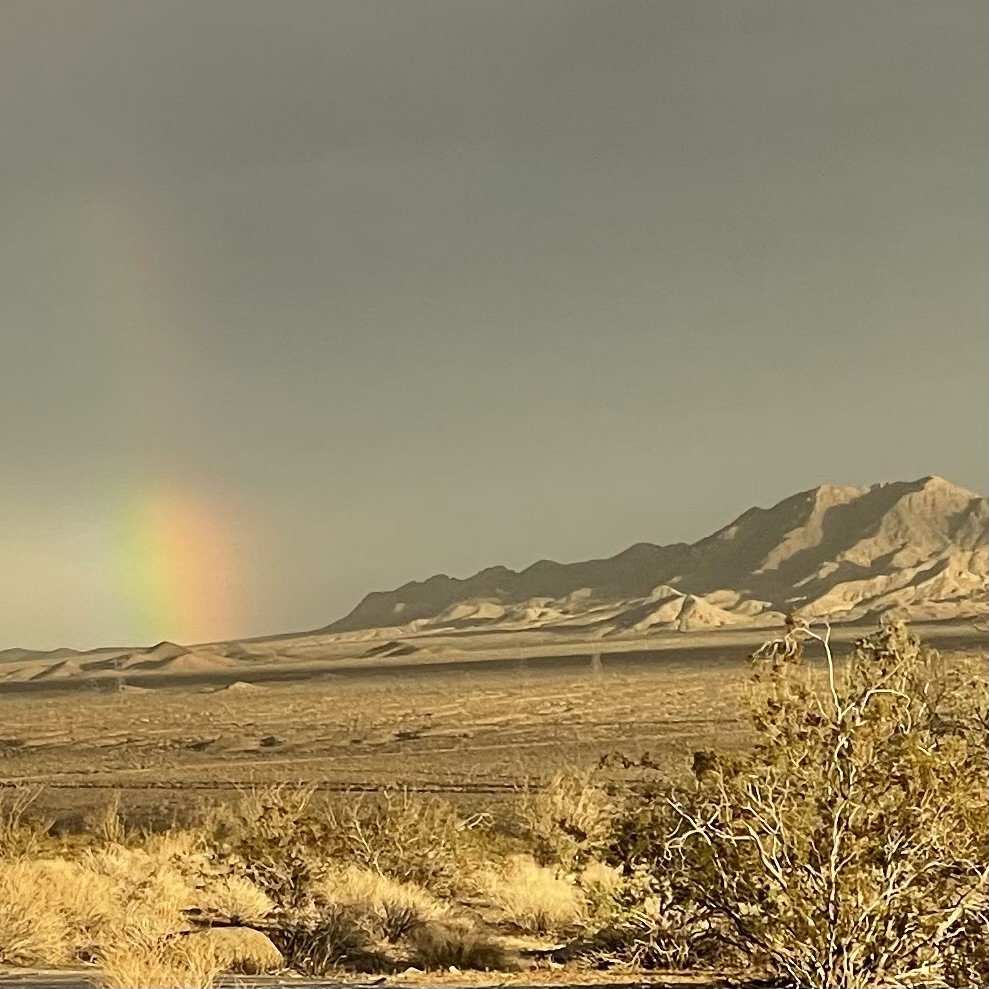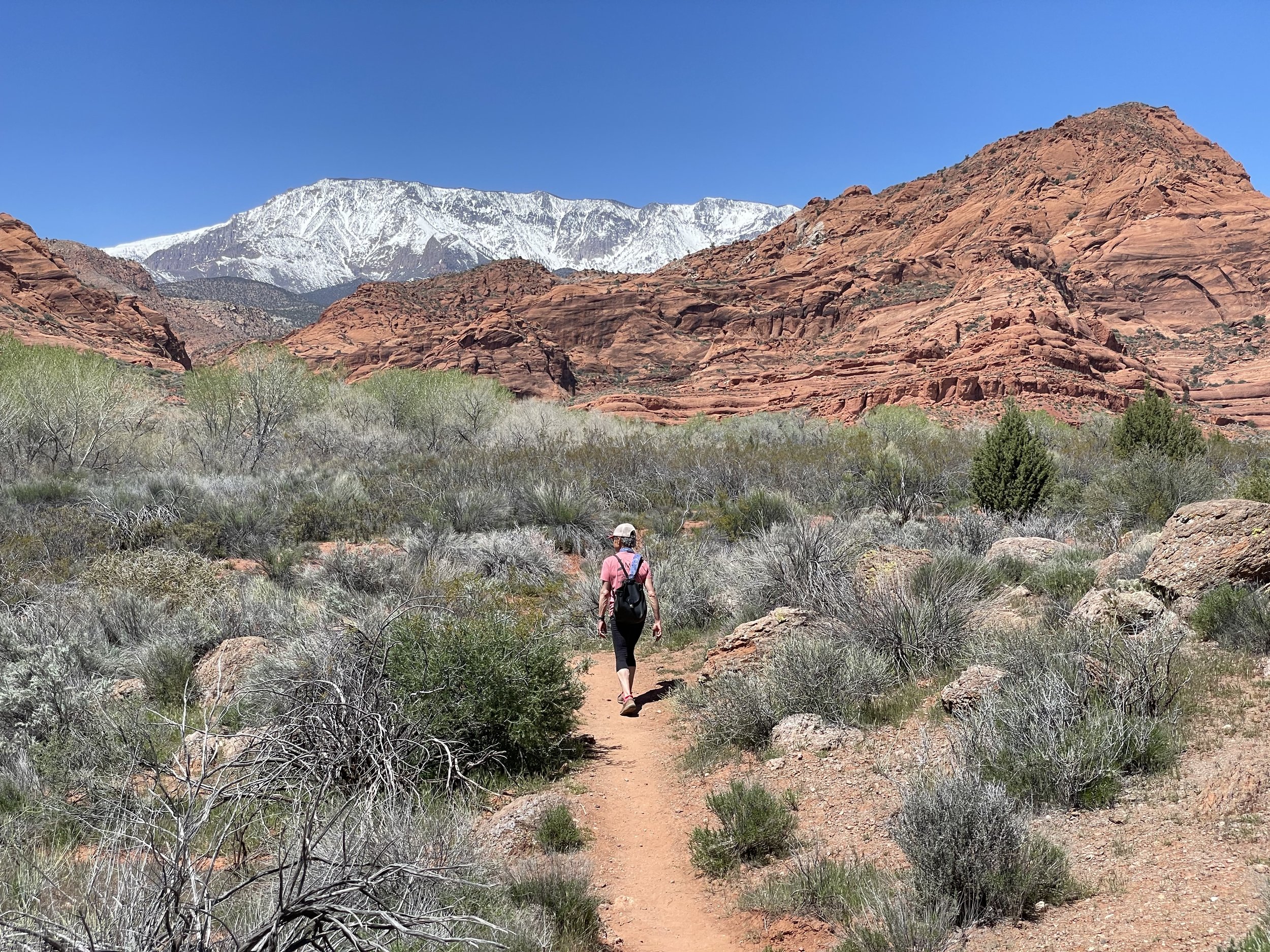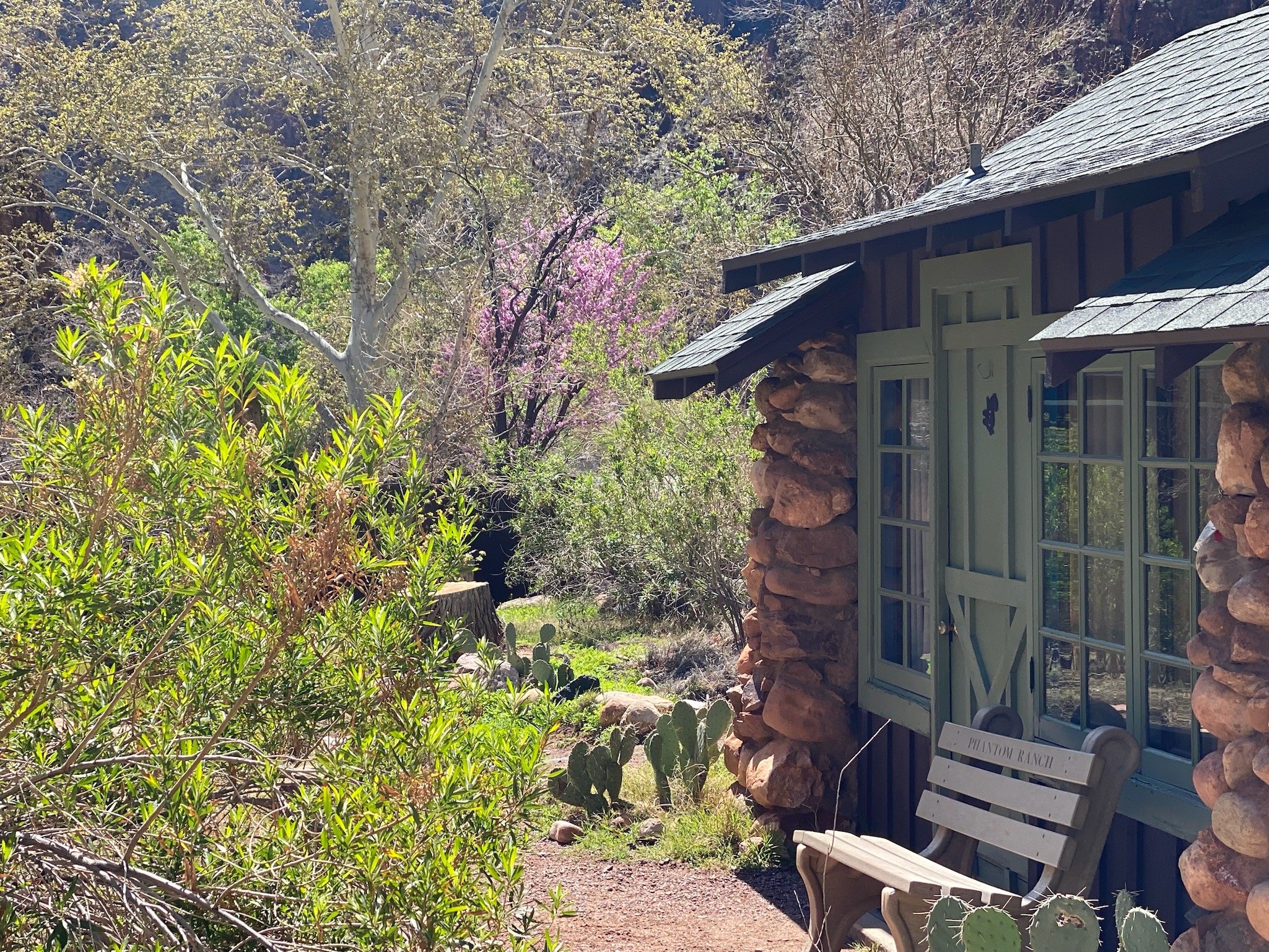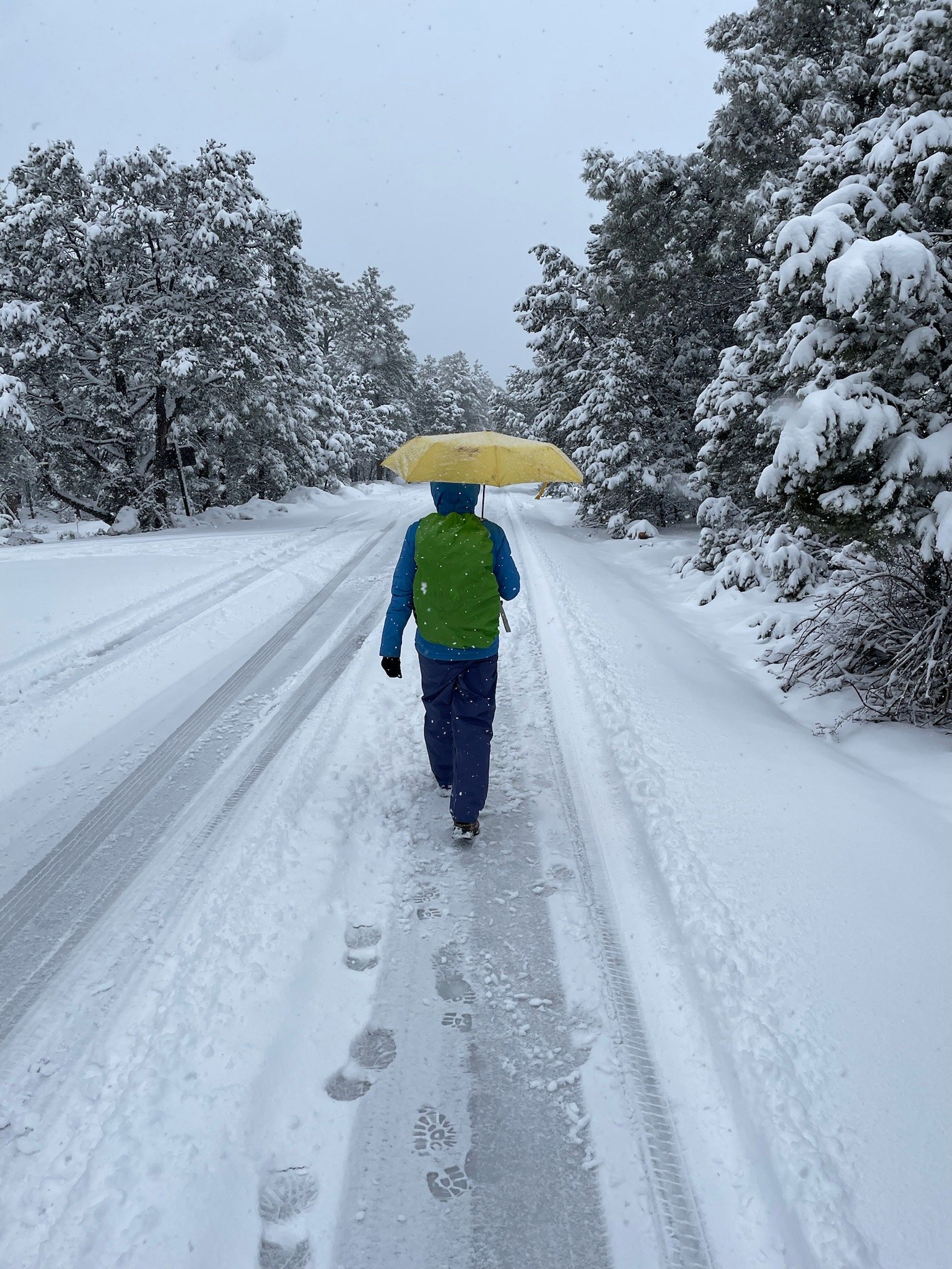Rocks and dunes of Death Valley National Park
After leaving the Grand Canyon, our original plan had been to head towards the National Parks in Utah, but a glance at the weather in those locations suggested another plan might be advisable. Both parks were below freezing and still experiencing snowstorms when we left the canyon rim. So instead, we turned south toward the Mojave National Preserve and Joshua Tree National Park which promised warmer climes.
The Mojave Preserve is a beautiful kind of dessert filled with Cholla Cactus and unusual rock formations. It was nice and warm during the day but still chilly at night. We went for a short hike and saw a herd of wild horses (Well, five. Is five a herd?). We camped at a place called Hole in the Wall, which would have been perfect but for the RV generators that now accompany any camping experience in a campground that doesn’t explicitly prohibit them or offer electric hookups. Sometimes the owners follow the rules and turn them off after 8 pm but they start them right up again in the early morning. We were forced to drive off in search of a quiet place to make and drink our coffee.
As beautiful as Mojave is, it is fairly uniform in appearance throughout the preserve except for the area of the park that has incredible sand dunes. Joshua Tree on the other hand is packed with diverse landscapes and botanicals but is desert-like as well. We spent several days there hiking around and camping for free on Bureau of Land Management (BLM) land. There were a large number of people camping out but it was fairly easy to find an area pretty far from other campers. Though we could hear the generators, they were not as intrusive as when they are right next door. Also, free camping so one can’t complain too much.
Nightfall on BLM land.
The downside of BLM Camping? No water taps, no toilets, no picnic tables to cook on. It’s as rustic as you can get without strapping on a backpack.
The Utah parks now seem to be thawing so we figured it is time to give them a try. On the way back to Utah we stopped at another desert park, Death Valley National Park. It took us the better part of two days getting there almost getting caught in the gravitational pull of Los Angeles and definitely getting caught in LA traffic.
Near Riverside, California we found a Trader Joe’s that had kosher wine and nearly everything we needed to make a seder and survive Passover on the road. Except matzah. They had none. There was another grocery store in the same shopping center that had plenty of matzah but just a single box that was kosher for Passover. Luckily, I had brought 3 boxes from home so with some careful rationing, we should be fine.
A camping innovation, the open face Hillel Sandwich.
We made our Passover Seder for two in a quirky KOA near Lake Isabella, Calif. with some odd substitutions. For bitter herbs, we had radishes. For a shank bone we had a stick. The choroseth, however, was delicious made with a juicy apple, roasted almonds some cinnamon and sugar. Our seder meal was chickpeas with Indian spices (we are Sephardic when it comes to Passover).
Next we explored Death Valley National Park, spending the several days there. The daytime temperatures well into the high-20s (80s F) and even in early April the sun is relentless. It felt hotter than the actual temperature. The freezing temperatures and snow of the Grand Canyon were a distant memory. We did a few hikes in the heat and checked out the Badwater Basin, the lowest point in the continental US and home of “the world’s toughest foot race.” 135 miles? I could barely make it half a mile from the car and back in the heat.
Signs and wonders.
This is the first-time I have had the chance to spend Passover literally wandering around in the desert and it feels wholly appropriate. Many cultures have viewed the desert through a mystical lens. It is a land of temperatures extremes, unforgiving winds, and strange creatures that can tolerate these conditions. It is easy to see why the desert has been associated with both liberation and revelation. The desert forces you to focus on life’s most basic needs: shelter from the sun, wind and cold, protection from the elements with the right clothing, and water. At the same time it invites reflection on the intangibles.
Speaking of water, also heightening our desert experience has been our limited access to drinking water! The KOA at Lake Isabelle warned us not to drink the water at all due to nitrate pollution from agricultural run-off. At the Death Valley Campground they advised boiling the water before drinking due to possible biological contamination. Fortunately, we carry 5 gallons of drinking water with us, but have to use it sparingly to make sure we don’t run out of drinking water before we reach a tap that has potable H2O. Being sparing with the drinking water is not ideal in the desert. Fortunately, there are soda machines at all the visitors centers and gas stations!
The last stop in our desert wanderings is Hurricane, Utah: a jumping off point for some of the national parks that grace southern Utah. We were running low on kosher wine (though plenty of water at this point) so hoping against hope, we stopped at a state controlled liquor store (this IS Utah after all) and they had enough kosher wine to last just one day. But we are hoping that with a miracle, the wine will last the remaining days of the holiday. Wait, wrong holiday.
No matzah at the Hurricane Walmart though. Not a scrap to be had — kosher for Pesach or otherwise. Just a box and a half left in the food box.
As Passover winds down we will begin ascend to higher elevations where cool temperatures and maybe more snow await.
Our destination? Appropriately enough: Zion.
Not the holy land, the National Park.
Next year in the Negev!
Among the red rocks of Hurricane, Utah. Cooler climes ahead.

